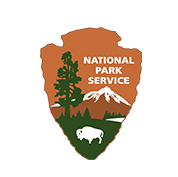Single Publication
Could not determine your location.
2023 - York Fire Burned Area Emergency Response (BAER)
Unit Information
Agency Name: National Park Service

Agency Name: National Park Service

Incident Contacts
Post-Wildfire Hydrology
2023 - York Fire Burned Area Emergency Response (BAER)
Publication Type: News 08/26/2023
Hydrologists are important members of a successful Burned Area Emergency Response (BAER). These specialists support post-wildfire land management decisions by developing analytical tools that integrate remote sensing and environmental modeling.
This is where Mary Ellen comes in. She is a research engineer at Michigan Technological University and was introduced to BAER when she was working for the United States Forest Service (USFS). At the time, part of her job was to validate satellite fire imagery. Soon after she graduated with her doctorate in environmental engineering, a friend’s home burned in a wildfire. Motivated to help her friend and the community, she participated in the BAER by measuring burn severity and modeling post-fire hydrologic events.
On the York Fire BAER, Mary Ellen guides post-fire remediation by creating a physically based model for predicting burn severity and watershed effects like flooding and erosion. The York Fire removed vegetation, which exposes the soil to erosion and can increase runoff.
Her first few days on this assignment were spent creating a soil burn severity map. She collected field observations and compared them to satellite imagery to create a map of low, moderate and high soil burn severity levels within the York Fire footprint. The data included the amount of remaining vegetation, ash depth, ash color, and soil structure. She conducted hydrophobicity tests, which measure the rate at which water penetrates and is absorbed into the soil. She collected data using an application built by Michigan Tech’s Human-Computer Interaction course. This application times data readings, compiles results, and generates maps for hydrological modeling. She also used the National Aeronautics and Space Administration (NASA) Earth Observations application to map retardant drops on the York Fire. This informed plans to mitigate increased invasive plant growth caused by fertilizers in the retardant.
Mary Ellen used hydrologic maps to model increased runoff and erosion and how it might impact life, property, and resources. These models simulate peak flows, runoff volume, erosion, and sediment movement. This data enables land managers to predict and assess potential hazards like flash floods and debris flows so that they can plan mitigation projects like ground mulching.
Ground cover is what makes a watershed healthy. Human activity like illegal off-road vehicle use can damage public waterways by eroding soil, compacting soil, and damaging vegetation. This can increase sediment runoff into nearby water bodies, which can clog bodies of water, hinder aquatic insect populations, and increase water temperature. The introduction of oil and other pollutants from off-road vehicles can also contribute to water contamination. Animals rely on healthy water. Poor water quality directly affects wildlife and the plants they eat. The public can minimize the negative impacts of off-road vehicles by remaining on designated vehicle routes.

 InciWeb
InciWeb